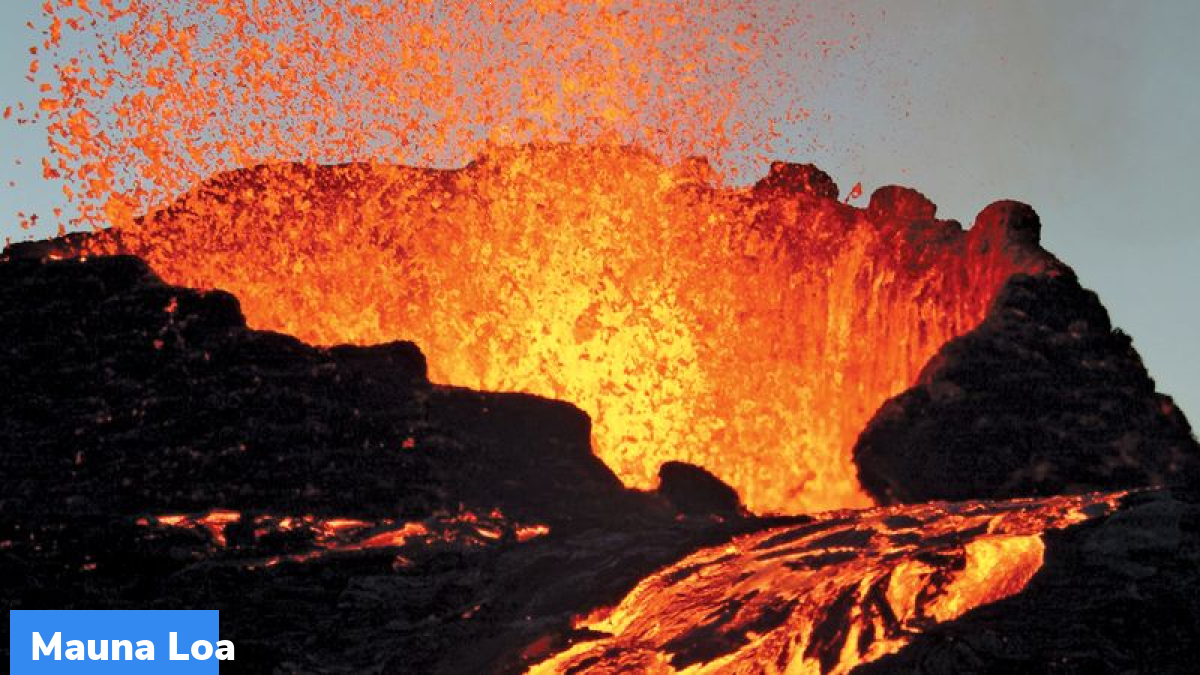Mauna Loa Volcano
Mauna Loa, the world’s largest volcano, erupted for the first time in 38 years.
About Mauna Loa
Mauna Loa is among the 5 volcanoes that together make up the Big Island of Hawaii – the Hawaiian archipelago’s southernmost island. Its name means “long mountain” in Hawaiian. This volcano takes up more than 50 per cent of the Big Island’s land mass and it rises 30,000 feet from the bottom of the sea, much higher than the Mount Everest. It is the largest (not tallest) volcano in the world. The tallest volcano is Mauna Kea.
Mauna Loa last erupted in 1984. It has erupted 33 times since 1843. The recent 2022 eruption is the 34th since the written history began in 1843. This volcano is situated at immediate north of Kilauea Volcano, which is infamous for the 2018 eruption that destroyed 700 homes and sent lava that purged farms before entering into the ocean.
What are the hazards posed by the Mauna Loa Volcano?
- Volcanic gas, especially sulphur dioxide, is released by this volcano. The highest concentration of these gases are present in the immediate area around the summit crater or vents. They are combining with the other particles to form vog, that can spread across the Big Island and other islands in Hawaiian archipelago. Vog can cause burning eyes, headaches and sore throats. Those with asthma and other respiratory ailments are highly vulnerable to this hazard.
- Depending on its flow, the lava can reach houses, farms, and neighborhoods in about a week.
- Glass particles are formed from the hot lava that erupts from the fissure and cools down rapidly. These glass particles are known as “Pele’s hair” or “Pele’s tears” after the Hawaiian goddess of volcanoes. According to National Weather Service (NWS) in Honolulu, winds will likely carry Pele’s Hair downwind along with volcanic gas and ash downwind. These glass bits can be sharp.
Month: Current Affairs – November, 2022
Category: Places in News Current Affairs


